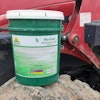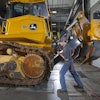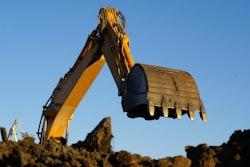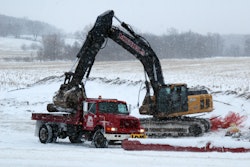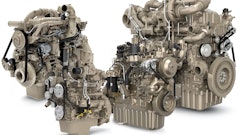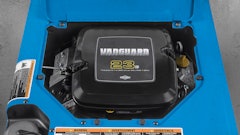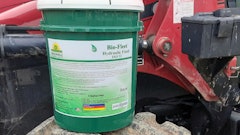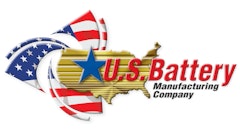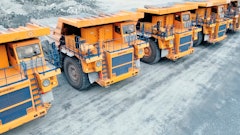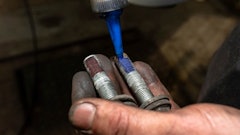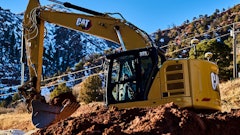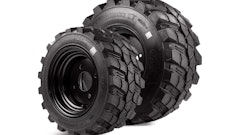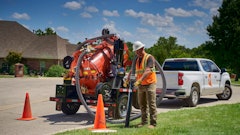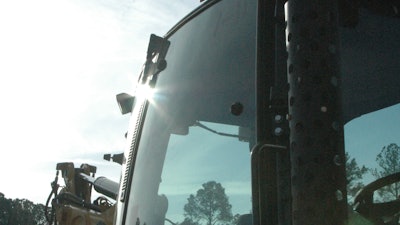
A question often asked by equipment managers is “how do temperatures impact lubrication?” This is especially true in locations where the climate can swing from extremely cold winters to hot summers, such as Calgary, Alberta, Canada, or Chicago, IL. With so much to consider as part of construction equipment maintenance, it is understandable that those responsible want to find ways to run their businesses as efficiently, reliably and safely as possible.
The good news is that consolidation is possible. Thanks to the availability and popularity of multi-grade oils such as a Society of Automotive Engineers (SAE) 10W-30, 10W-40 or 5W-40 and their ability to handle both ends of the spectrum of operating temperatures, equipment can benefit from not requiring a seasonal change. However, it's important for equipment managers to understand the different demands hot and cold conditions put on lubricants, and the risk of not using the appropriate oil for the environment.
The engine Original Equipment Manufacturer (OEM) manual dictates the temperature range in which each SAE grade of engine oil can perform optimally. According to the SAE engine oil viscosity classification, the number preceding the “W” indicates the suitability of an oil for colder temperature start-ups, with lower numbers delivering improved pumpability.
How do hot temperatures impact lubricants?
With summer here, one of the main concerns for those managing equipment operating in hot environments is a decrease in lubricant film thickness due to lower viscosity.
The viscosity of an oil is crucial as it dictates its ability to flow and form an oil film thick enough to separate lubricated engine parts. If the oil’s viscosity is too low, the oil film thickness may be inadequate, which could compromise the protection of the engine parts, causing friction that can lead to accelerated wear and overheating. This can cause serious operational problems such as a breakdown of the oil film, reduced power, increased oxidation rates and fuel economy losses due to oil thickening.
It is critical that the operating temperature of the equipment is taken into account when selecting an oil. A climate that experiences warmer temperatures all year long may necessitate a heavier engine oil such as an SAE XW-30 or XW-40 grade - one able to resist the breakdown that comes with higher operating temperatures by ensuring proper and adequate film thickness and the protection of critical engine components.
SAE classification values which do not include the “W” (which stands for “winter”), are known as monogrades and define oils designed for use at higher temperatures. The higher the numerical value, the thicker the oil film at increased temperatures. A higher second number in the viscosity rating of a multigrade engine oil – the “40” in 10W-40, for example - will also indicate a thicker film at higher temperatures.
What stress can low temperatures put on engines?
Looking ahead to the rest of the year when ambient temperatures drop, the main concern is keeping engines warm and running efficiently, without risk of seizing up or suffering other adverse effects. This is especially the case for businesses working in time-pressured conditions such as snow removal, waste management and mining, where any unscheduled downtime from reduced performance can quickly lead to lost productivity and revenue.
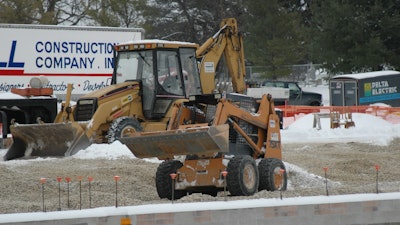 A colder climate necessitates a lower viscosity grade engine oil to ensure proper and adequate oil flow to protect critical engine components.
A colder climate necessitates a lower viscosity grade engine oil to ensure proper and adequate oil flow to protect critical engine components.
Oils carrying the “W” designation must have the proper viscosity value when measured at appropriate low temperatures. Check your owner’s manual for the proper SAE grade oil for the ambient temperatures expected.
Planning and preparation is key
Regardless of the climate and conditions equipment is working in, it’s crucial that equipment owners and managers have prepared and considered not just the choice of engine lubricant, but multi-grade hydraulic, driveline and gear oils too to ensure all engine components are protected. Operators should also be regularly checking coolant condition and batteries to ensure engines are running safely and efficiently, no matter the weather or time of year.
Darryl Purificati is OEM technical liaison, Petro-Canada Lubricants.

